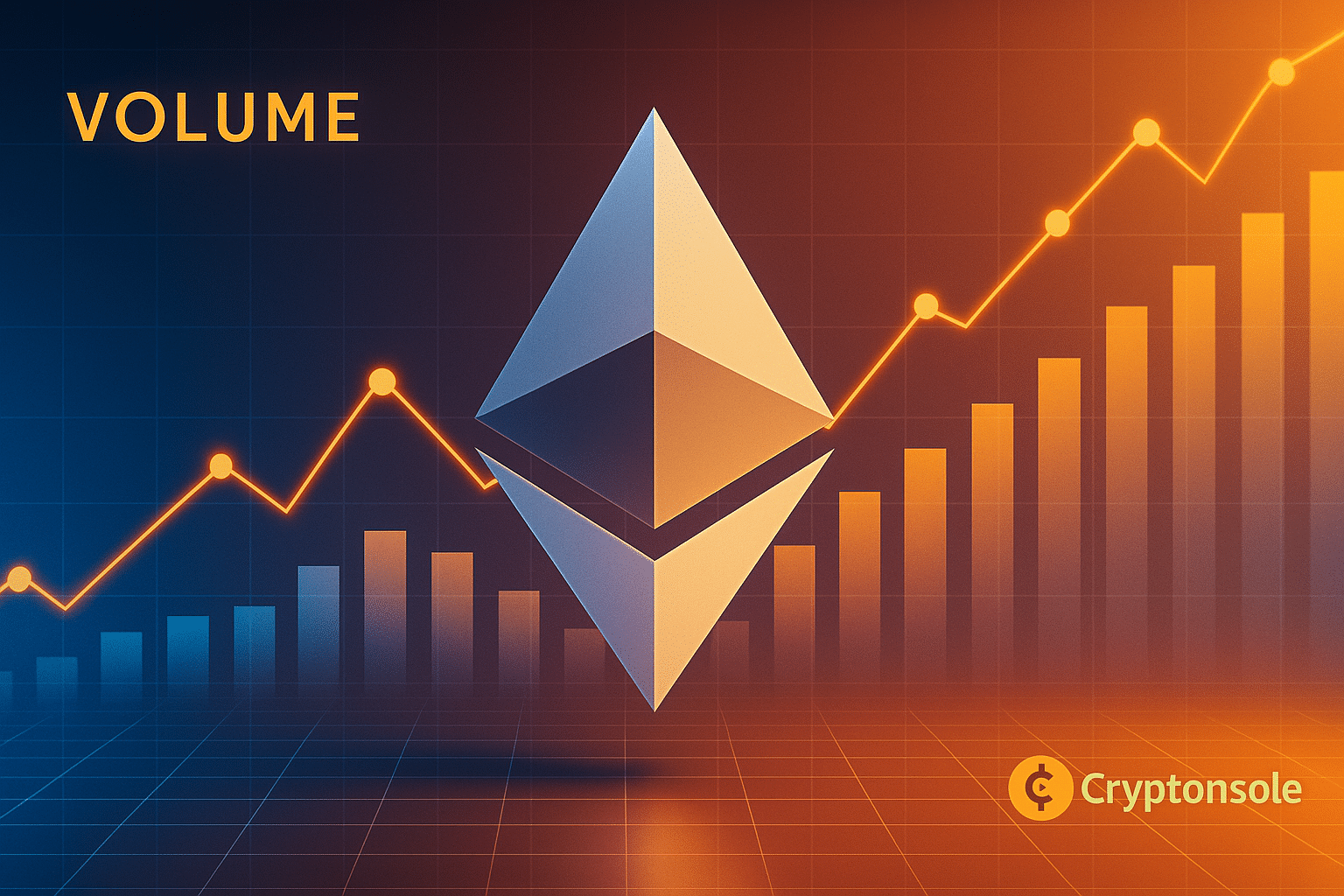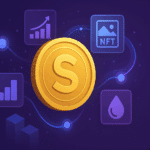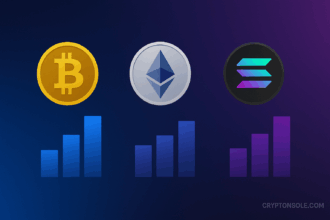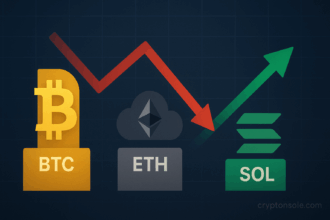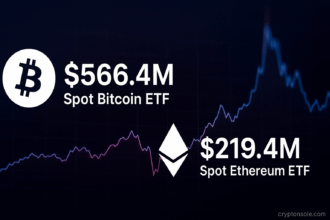Table of Contents
Key Takeaways
- Ethereum’s onchain volume surpassed $320 billion in August, its highest level since May 2021, marking one of the network’s strongestj months on record.
- Growth was driven by corporate treasury adoption, ETH ETF inflows, and lower transaction fees following recent upgrades.
- Validator churn and restaking protocols added to activity, reinforcing Ethereum’s role as a settlement layer for global finance and applications.
Ethereum Records Multi-Year Activity Peak
In August, the Ethereum blockchain achieved its highest performance in years, as onchain transfer volume exceeded $320 billion, according to The Block’s data. This is the third-largest month in Ethereum’s history and the most active since May 2021.
The higher demand is the result of the rising adoption of Ethereum as the pillar of DeFi, NFTs, and the corporate treasury roadmap. Apart from the high onchain throughput, the monthly transactions, the number of active addresses, and the value locked across applications all hit multi-year highs.
Corporate Treasuries and ETFs Fuel Growth
Corporate treasury adoption was one of the most remarkable reasons that Ethereum’s rally in August. Public companies increased their cumulative ETH holdings from $4 billion in early August to more than $12 billion by the end of the month. BitMine Immersion and SharpLink Gaming were among the largest contributors and their support indicates that corporations consider ETH not only as an asset of the balance sheet but also as a strategic investment.
At the same time, spot Ethereum ETFs in the U.S. experienced a rise in trading volumes and inflows, and issuers now hold more than 5% of the total ETH supply collectively. Analysts consider it a strong indication of enhanced institutional interest and confirmation of Ethereum as a digital asset of the future.
This double desire from the corporate treasuries and regulated ETFs created a unique situation for onchain flows on Ethereum to reach record levels and therefore distinguished it from a lot of other blockchains.
Low Fees and Network Upgrades Drive Usage
One of the factors behind the revival of Ethereum was the fact that the fees for transactions were close to the lowest they had been for about five years. After the Dencun upgrade (March 2024), which allowed for the implementation of EIP-4844 (proto-danksharding), there was a significant drop in data costs for rollups and hence volume shifted from Layer 1 to Layer 2.
The Pectra upgrade in the current year has additionally elevated the ease of use, leading over to improved account abstraction, better developer tooling, and upgraded user experience features. It is generally acknowledged these technical milestones are essential for Ethereum’s scalability roadmap and its ability to stay competitive in the long run.
With the lowering of fees and the improvement of infrastructure, the users and developers have found new incentives to transact and build, which has led to the record-breaking on-chain metrics in August.
Validator Flows and Market Dynamics
Besides, validator turnover has also been one of the main reasons for the high activity in Ethereum. According to data, exit requests went off the charts, whereas new entry requests rose to a two-year high. The movement of validators in this space is majorly due to liquid restaking protocols, which not only let the stakers yield the maximum but also keep their assets liquid.
The summer season has been very lucrative for these protocols, which have been the recipients of tens of billions of dollars inflows. This has created more demand for Ethereum blockspace and strengthened the network’s position as a source of decentralized yield strategies.
On the other hand, experts from reputable financial institutions such as Standard Chartered, are of the view that the market may be underestimating the drivers behind Ethereum’s growth. These factors include corporate adoption, ETF inflows, and the strengthening ETH/BTC ratio and point to the fact that Ethereum might be entering a new stage of being recognized by institutional investors.
Moreover, the storyline is supported by the fact that already several big Bitcoin holders have redirected their funds to ETH and also U.S. public sector blockchain experiments such as publishing macroeconomic data on Ethereum are giving signals to the community that the network is a viable option for a general-purpose settlement layer.
Summary
Ethereum closed August with a remarkable milestone: over $320 billion in onchain volume, the network’s highest throughput since 2021 and its third-largest month ever. The growth was powered by a combination of corporate treasury accumulation, ETF inflows, and reduced transaction fees from key upgrades.
Validator restaking flows and cross-asset capital rotations further fueled the activity, while analysts noted Ethereum may still be undervalued relative to its expanding utility.
As Ethereum traded around $4,337 on Friday, down 12% from all-time highs, the network’s latest metrics underscore its resilience and importance. With both institutional and retail momentum converging, Ethereum is positioning itself not just as a smart contract platform, but as a cornerstone of digital finance and infrastructure.
Also Read: Eclipse Labs Shock: Cuts 65% Staff and Names Powerful New CEO
27Q3UZYK







